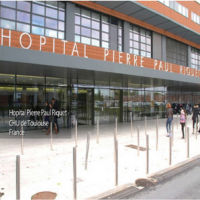Technology has affected all aspects of our lives. And Critical Care Medicine is no different. This technology revolution has led to the development of many apps that are used by both patients and professionals. Here is an overview of technological advancements and medical applications that have had significant impact on Critical Care Medicine:
See Also: The Hospital of Tomorrow
eHealth
Mobile health or mHealth has tremendous potential application in public health. From providing healthcare resources to a wide array of people to reducing hospital stays and healthcare costs, eHealth has made quite an impact. In developed countries, eHealth is the ultimate tool to solve the problem of rising costs and providing healthcare access to an ageing population while in developing countries, eHealth has facilitated access to healthcare to low income populations in rural areas.
Apps and Medicine
Patients and physicians now have access to a variety fo applications. While all of them are not backed by scientific evidence, there are others that have improved healthcare in various ways. These include apps designed for:
- primary prevention such as those used to control blood pressure, body weight etc.
- health training such as apps that identify signs and symptoms of diseases.
- self-care and guided therapies such as apps that improve self-care responsibilities such as adherence to treatment, monitoring existing conditions etc.
- rehabilitation such as apps that allow users to take advantage of tele-rehab with mobile devices and sensors that can be monitored by therapists.
Dissemination of information
There are now several apps that distribute journals. Users can simply purchase articles, journal issues and download them. In addition, there are apps that allow users to search through medical literature databases such as PubMed/MEDLINE.
Medical Calculators
This is another group of widely used apps in the intensive care setting. These apps are extremely useful for prognostic indexes, formulae related to analytical values and infusion dose titration. Some popular apps include MedCalc, MedCalX and MDCalc.
Medical Information
There are several apps with summaries on topics, schemes or diagnostic algorithms such as Sanford Guide, The Antibiotic Therapeutic Guide, Sepsis Clinical Guide, iTox and others.
All-in-one Apps
There are some apps that have multiple functionalities such as MedScape, Epocrates, Omnio and iDoctus. These apps have numerous functions such as therapeutic and diagnostic algorithms, disease indeex, medication guides, calculators and so on.
Education
With the rapid increase in the use of tablets and with Internet connectivity and app interaction, there are apps that help students in their academic training and clinical practice. Many medical schools and residency programmes in medical schools have replaced textbooks with electronic tablets.
Diagnostic Tools
There are apps that are designed to achieve precise diagnosis and treatments. These apps provide disease information, laboratory values, different diagnoses, treatments and so on. Some popular ones include enGuardia and iResus.
Clinical Communication
With the use of smartphones, healthcare providers can instantly communicate with each other. This not only improves communication but can also reduce risk of medical errors and can increase patient satisfaction.
Hospital Information Systems
There are apps that provide access to hospital information systems such as electronic health records, electronic medical records, digital storage transfer, download of radiological images etc.
Medical Research
Apps for medical research purposes have a collection of data from studies and clinical trials that can be extremely useful for medical and healthcare research.
Innovation
There are some innovative apps that offer real time visualisations of patient's vital signs through their smartphones. Others can turn the phone into one point-of-care ultrasound system. There are yet other apps that digitalise blood pressure curves.
Source: Med Intensiva
Image Credit: Pixabay
References:
Iglesias-Posadilla D. et al. (2017) Apps and Intensive Care Medicine. Medicina Intensiva. May;41(4):227-236. doi: 10.1016/j.medin.2017.01.003
Latest Articles
Technology, Apps, smartphones, intensive care
Here is an overview of technological advancements and medical applications that have had significant impact on Critical Care Medicine:



























